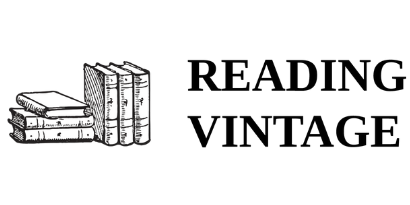February 26, 2024
Welcome to the world of literary critique, where words and ideas intertwine and dance on the stage of a reader’s mind. Mastering a book review form is much like learning a fine art; it requires understanding, strategy, and a dash of creativity. Ready to embark on this journey? Let’s begin!
A book review form is a structured guide for assessing a book, including its plot, characters, and themes, ensuring a comprehensive critique.
Adaptability is key when creating book reviews; templates should reflect one’s unique approach and be customized based on the book genre and the platform they will be shared.
Effective book reviews combine factual information, a balanced summary and analysis, personal opinions, and creative elements like visual aids or custom rating systems for a deeper, more engaging critique.

A book review is more than just a summary or a report; it critically examines an author’s work, dissecting their ideas, writing techniques, and overall quality. A well-crafted book review can be a gem in the literary world, guiding readers as they decide which books are worth their time.
A book review form, or template, is a handy tool in this process. Organized like an outline, book review templates help you evaluate different parts of a book in a structured way, ensuring that no critical aspect is overlooked.
A book review form is a roadmap, leading you through the intricate maze of a book’s content, style, and impact. It provides a framework for assessing different aspects of the book, such as summarizing the content, analyzing the author’s ideas and writing techniques, and critically evaluating the book’s quality.
The form's purpose extends beyond analyzing the book; it also aids readers in determining if they should invest time in the book’s world. It’s like a literary GPS, guiding potential readers through the book’s thematic landscape.
Think about navigating a busy city without a map or GPS—it's challenging, right? The same goes for book reviews. A book review form is like a navigational tool that helps craft a comprehensive and organized critique. It provides a structured format that ensures you cover all aspects of the book, from:
Using a book review form can help you stay organized and provide a thorough analysis of the book.
A well-structured critique provides a thorough description, analysis, and evaluation of the book. In a way, a book review form is your literary assistant, helping you create an informative, balanced, and in-depth review.
Formulating a unique book review template is akin to building your literary toolbox. It is a process of adapting to different platforms, considering genre-specific elements, and incorporating your evaluation criteria into an essay style. There are classic templates that focus on aspects like:
But these may sometimes feel restrictive.
The goal is to craft a template that reflects your analytical approach and evaluation criteria. This could mean tweaking your template based on the genre of the book or adapting it to the specific requirements of different platforms, such as a blog, a print magazine, or a social media post.
In the era of digitalization, book reviews have ventured beyond the boundaries of the printed page. They are shared on various platforms, including:
Each platform has its unique requirements in terms of length and format, and it’s important to adapt your book review template accordingly.
Whether you’re creating an engaging video review or a concise Instagram post, the essence of a book review remains the same. You need to provide an overview of the book, an analysis of its content, and your personal opinion. The key is to package this information in a well-suited format for the platform.
Each book is distinct; likewise, your book review template should be unique. A one-size-fits-all template might not capture the unique aspects of different genres. A non-fiction book review, for example, would focus more on the author’s credibility, content structure, and relevance, while a science fiction book review would delve into the plausibility of science and technology and the believability of the futuristic world.
Creating genre-specific templates is like designing specialized tools for different tasks. It ensures that your review captures the unique aspects of each book, providing a critique that is as diverse and varied as the world of literature itself.
Like a building’s blueprint, a book review form incorporates fundamental elements to shape your critique. These elements are the building blocks of your review, guiding your analysis and evaluation. They cover:
A comprehensive book review form guarantees an all-encompassing critique. It helps you navigate the book’s narrative terrain, from the peaks of its plot to the valleys of its themes and the trails of its characters’ development.
It all begins with the basics. The starting point of any book review is the basic information about the book: its title, author, publisher, publication year, and book cover. This information serves as the book’s ID, providing readers with an overview of the book’s origin and context.
The primary information section of a book review form includes the following details:
This section provides readers, along with other readers who may have different perspectives, with a snapshot of the book’s essential details, including the main character and the setting of the school year, which sets the stage for the detailed analysis and evaluation that follow.
The next stop on your book review journey is the Summary and Analysis section. This is where you briefly overview the book’s content and thoroughly analyze its essential aspects. A concise, well-written summary gives readers a snapshot of the book’s premise and main themes.
On the other hand, book analysis is where you dive deeper, examining the book’s plot, characters, and writing style. It’s like a literary dissection, where you examine the book’s anatomy and discuss its strengths and weaknesses. The key is to balance your summary and analysis, providing readers with a comprehensive understanding of the book.
Your book review is more than just a summary and analysis; it expresses your opinion. This is where you share your thoughts about the book, discussing what you liked or disliked and how the book resonated with you. Your opinion adds authenticity to your review, making it more relatable to the readers.
In addition to your personal opinion, your recommendation plays a crucial role. It’s your final verdict on whether the book is worth reading. A well-crafted recommendation can guide potential readers, helping them decide whether the book is right for them.
A book review need not be a rigid academic analysis. In fact, when writing book reviews, the most engaging ones are often those that incorporate creative elements. Visual aids and custom rating systems are two creative approaches that can spice up your book review form, making it more engaging and relatable.
Visual aids like images, infographics, or videos can make your review more engaging and easier to understand. On the other hand, a custom rating system allows you to provide a more nuanced assessment of the book, reflecting your criteria and preferences.

Incorporating visual aids in your book review is like adding color to a black-and-white sketch. It enhances the review, making it more engaging and easier to understand. Some examples of visual aids you can use are:
These visual aids can bring your analysis to life, providing a visual representation of your ideas and a free download option.
Visual aids can also help in explaining complex ideas or themes. An infographic, for example, can help readers visualize the book’s main themes or the development of its characters. Similarly, images or illustrations can provide a visual reference that complements your text, making your review more engaging and informative.
A custom rating system is like your personal stamp on the review. It allows you to provide a more nuanced assessment of the book, reflecting your criteria and preferences. Instead of a simple star rating, a custom rating system can consider different aspects of the book, such as:
Developing a custom rating system for book reviews has several benefits:
By creating your own rating system, you can tailor your reviews to your specific audience and provide them with valuable insights into the books you review.
Learning from examples is a proven method to acquire a skill, and this approach is equally effective for book reviews. Let’s explore some examples of book review forms for fiction and nonfiction books. These examples provide practical insights into how a book review is structured, helping you understand the process and gain inspiration for your own reviews.
Whether you’re reviewing a gripping mystery novel or a thought-provoking nonfiction book, these examples provide a practical perspective on structuring your review. They showcase how different elements of a book review form come together to create a comprehensive critique, providing a roadmap for your own book review journey.
Fiction books carry us to diverse worlds, presenting characters and stories that enthrall our imagination. A fiction book review form focuses on elements like:
This provides a detailed analysis of the book’s narrative landscape.
From exploring the plot’s structure to examining the characters’ development, a fiction book review form guides you through the process of analyzing and evaluating a fiction book. It’s like a map guiding you through the narrative terrain, helping you explore the book’s highs and lows, twists and turns, and peaks and valleys. In many ways, it shares similarities with book reports, aiming to analyze and evaluate a book’s content.
Nonfiction books grant us a glimpse into reality, covering everything from historical occurrences to scientific revelations. A nonfiction book review form emphasizes aspects like the author’s expertise, organization, and clarity of information, providing a detailed analysis of the book’s content and structure.
From evaluating the author’s credibility to assessing the book’s organization, a nonfiction book review form guides you through the process of analyzing and evaluating a nonfiction book. It’s like a compass guiding you through the ocean of facts and insights, helping you navigate the book’s content and structure.
For all the book enthusiasts and club members out there, the "Book Review and Summary Template System" is a must-have tool. Available on Reading Vintage, this digital bundle is designed to ignite your literary prowess and help you craft compelling, insightful reviews.
Comprising 18 pages of easily printable templates, this system provides thoughtful prompts to guide you through your reading journey. Whether it's tracing character arcs, dissecting plot machinations, noting profound quotes, or highlighting pivotal events, this template has got you covered.
This template system is perfect for preserving your reading reflections and sharing your insights with your book club. It is a true treasure trove for readers craving a structured approach to encapsulating their reading experiences. So why wait? Enhance your reviewing skills and capture the heart of your book experiences with this dedicated scribe!

Perfecting the art of book reviews is an ongoing journey of learning and refining. Along the way, some tips and tricks can help you elevate your reviews, making them more insightful and engaging. Two such tips are staying objective and balancing summary and analysis.
Staying objective ensures that your reviews are fair and unbiased, providing a balanced assessment of the book. Balancing summary and analysis, on the other hand, ensures that your review provides a comprehensive understanding of the book, providing readers with both an overview of the content and a detailed analysis of its key aspects.
If you're eager to delve deeper into the art of crafting effective book reviews, numerous resources are available to enhance your understanding and skills. A Book like "How to Write a Book Review" by Rebecca Graf will get you started. Online platforms such as Coursera and Udemy also offer courses on book review writing. For more interactive learning, consider joining a local or online writing group to exchange reviews and get peer feedback. Remember, the journey to mastering book reviews is a continuous learning process, and these resources can be invaluable guides along the way.
In the realm of book reviews, objectivity reigns supreme. Keeping your biases at bay and focusing on the book’s content is essential. Staying objective ensures that your reviews are fair, balanced, and trustworthy, providing readers with a reliable assessment of the book.
To ensure objectivity in your book review, follow these guidelines:
Remember, a free book review is not about your likes and dislikes but about the book’s quality and relevance.
A balanced book review maintains an equilibrium between summary and analysis. While the summary provides an overview of the book’s content, the analysis dives deeper, examining the book’s strengths and weaknesses. It’s like a literary seesaw, balancing the ‘what’ of the book with the ‘why’ and ‘how.’
To ensure a balance between summary and analysis, follow these steps when writing a book review:
Create an outline to organize your ideas.
Dive deeper into the themes and characters, providing specific examples from the book.
Remember, a book review is not just about what happens in the book but about how and why it happens.
As we conclude our journey, remember that mastering the art of book reviews is a continual learning and improvement process. With the right tools and strategies, you can craft insightful, engaging reviews that comprehensively critique a book. As you continue your journey, may your reviews guide other readers, illuminating the path to literary exploration.
a. A book review form provides a structured framework for assessing a book, including summarizing the content, analyzing the author's ideas and writing techniques, and critically evaluating the book's quality. It helps the reviewer organize their thoughts and provide a comprehensive analysis.
a. When adapting your book review for different platforms, it's essential to tailor the length and format to each platform's requirements. Additionally, consider incorporating suitable audiovisual elements for video reviews.
a. The essential elements of a book review form are basic information about the book, a summary of its content, an analysis of its strengths and weaknesses, and your personal opinion and recommendation.
a. Including visual aids like images, infographics, or videos can make your book review more engaging and accessible. They visually represent your ideas and help explain complex themes or ideas.
a. To ensure your book reviews are objective, focus on presenting facts and data, use formal language, avoid letting emotions sway your judgment, and always provide evidence to back up your points. This will help you maintain impartiality in your reviews.
 Author Bio: Pam of Reading Vintage
Author Bio: Pam of Reading VintagePam from Reading Vintage is your go-to guide to the world of vintage books. Scouring estate sales in Michigan's Great Lakes Bay Region, she finds and shares literary gems that span decades. Pam's passion isn't just about collecting; it's about connecting readers with the timeless stories and authors of the past.
Comments will be approved before showing up.

